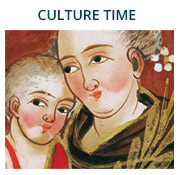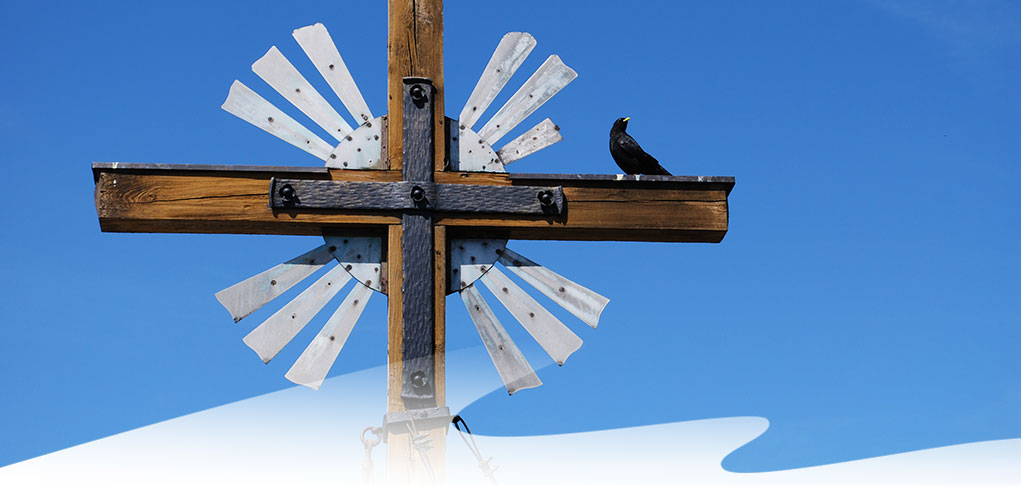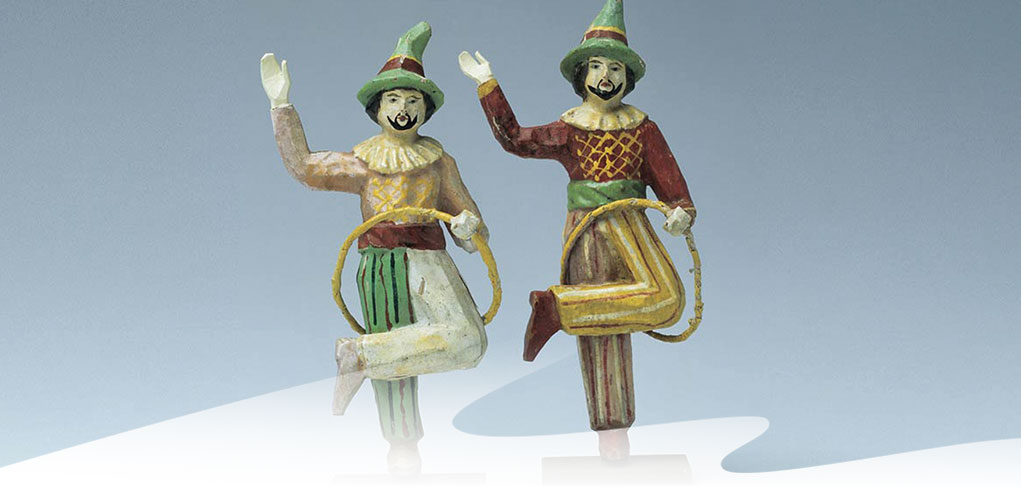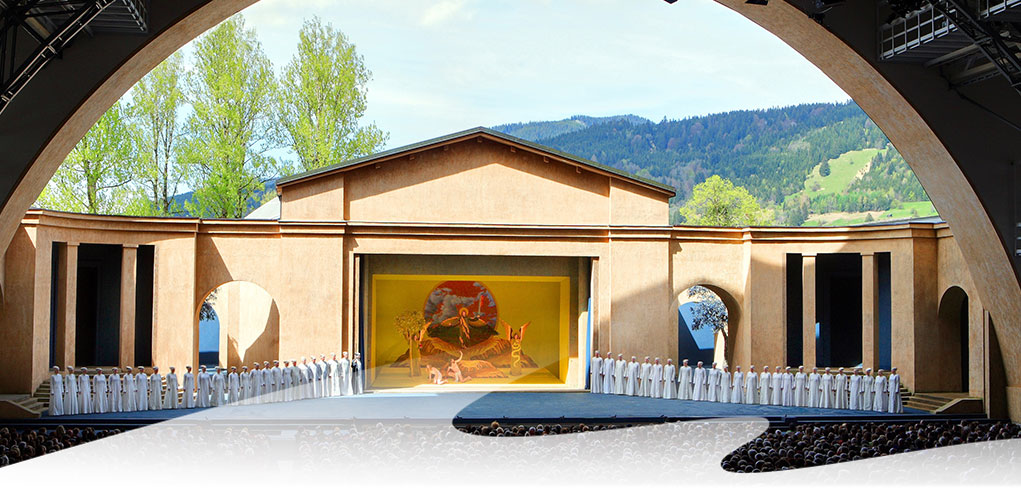Use the Links to get to the Content:
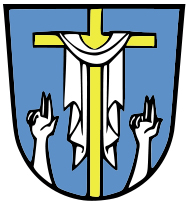 Oberammergau – Well worth a Visit!
Oberammergau – Well worth a Visit!
The home of the Passion Play that is performed every ten years, Oberammergau is also renowned for its wide range of wood carvings and paintings, especially traditional mural designs and reverse glass painting.
Guided tours at 2 p.m. every Saturday from Ammergauer Haus.
Culture Mile
The Culture Mile gives you an overview of the sights of the region. The Ammergau Alps Cultural Mile lets you experience the cultural heritage of the Ammergau Alps through sight and sound. Each of the 18 stations along the Cultural Mile also features an interesting audio report that you can access using your own cell phone for the same cost as a regular call to the German landline network.
A brochure, "My Journey Through Time", and maps can be obtained free of charge from reception.
Lüftlmalerei
This is the name given to a traditional method of mural painting that dates back to the Baroque-era façades of Italy and Southern Germany. Prosperous merchants, farmers and craftsmen in the 18th century displayed their wealth in the form of lavishly painted façades. The motifs were largely religious, with holy figures featuring heavily. In Oberammergau, this often also included scenes relating to the Passion Play.
The technique used is a fresco in which mineral-based watercolors are applied to freshly laid plaster, combining to form an insoluble layer of color as the plaster sets. The need to work quickly in the fresh air ("Luft") led to the belief that the term "Lüftlmalerei" originates from this painting technique.
However, it is more likely that the name dates back to Franz Seraph Zwinck (1748–1792), probably the best-known craftsman of his guild. He lived for a while in a house called "Zum Lüftl" in Oberammergau, and hence became known as the "Lüftlmaler" (the "Lüftl" painter). Over the course of the 19th century, this name for Zwinck is believed to have developed into the name for the profession as a whole.
Franz Seraph Zwinck left a legacy of countless ornately decorated façades in Oberammergau and the surrounding area. Our neighboring buildings (the Kölblhaus and the Dedlerhaus) are two beautiful examples of the genre.
Pilate House
The Pilate House, located in the heart of Oberammergau, is decorated with numerous mural paintings created in 1784. The house is named after the scene on the front of the house facing the garden, which depicts the denunciation of Jesus by Pontius Pilate.
Oberammergau Museum

The Oberammergau Museum is one of Bavaria's oldest and most attractive cultural history museums.
Its exhibits cover a wide range of art and handicrafts from the 17th century to today. Crucifixes, holy figures, nativity scenes, toys and modern sculpture come together under one roof.
The crèche collection and its showpiece, the former nativity scene from the Oberammergau Parish Church. Over a period of more than 100 years, the village woodcarvers created a nativity scene for the Parish Church of St. Peter and Paul, which was completed in 1742.
The toy collection comprises dolls and doll heads, toy soldiers and mobile fortifications, carts and wagons, stables and arks with all kinds of animals, postilions and passengers, coachmen and riders, wooden gymnast toys and marionettes. They all come together for a colorful rendez-vous at the Oberammergau Museum.
Sculpture Tail
Oberammergau has a centuries-old tradition of sculpture and gained a far-reaching reputation for its carvers of religious figures. But the town also has a thriving contemporary art scene, not least thanks to its carving school, which celebrated its 125th anniversary in 2003. The Sculpture Trail is designed to provide a forum for this contemporary art while also introducing guests and residents to the wealth of artistic talent in the town and the wider region. "Humans and Animals" was selected as the motto for the first Oberammergau Sculpture Trail. The 13 works of art were displayed between the Passion Play Theater and the Parish Church. A board with more detailed information on the Sculpture Trail can be found next to the church.
Church of St. Peter and Paul
The Parish Church bears the signature of some famous artists. Josef Schmuzer (1683–1752) from Wessobrunn led the construction of the church and was responsible for the stucco work together with his son Franz-Xaver. The latter was also responsible for the altars and figures. All of the ceiling frescoes and wall frescoes in the presbytery and the paintings adorning the high altar and the altar of Anna were made by Matthäus Günter (1705–1788), a leading master craftsman. Franz Seraph Zwinck (1753–1808) was responsible for the frescoes on the gallery balustrades and ceiling.
The ceiling fresco in the nave dates from 1741 and was the first work by Matthäus Günther in Oberammergau.
Crucifixion Group
King Ludwig II, who built Linderhof Palace, was so deeply moved by the Passion Play that he donated this imposing marble crucifixion group to the people of Oberammergau.
Passion Play Theater
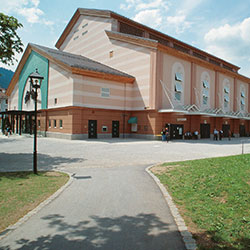
In the middle of the Thirty Years' War, after months of suffering and death from the plague, the residents of Oberammergau swore an oath that they would perform the "Play of the Suffering, Death and Resurrection of Our Lord Jesus Christ" every ten years. At Pentecost in 1634, they fulfilled their pledge for the first time on a stage erected in the cemetery above the fresh graves of the plague victims.
The Passion Play has been performed at the site of the present-day theater since 1830. The stage, which has been frequently rebuilt and improved in terms of its technology, took on its current form in 1930. The auditorium was roofed over in 1900. It is opened up towards the open-air stage and has around 4,800 seats.
Tours of the Passion Play Theater:
daily from 10 a.m. to 4 p.m.






